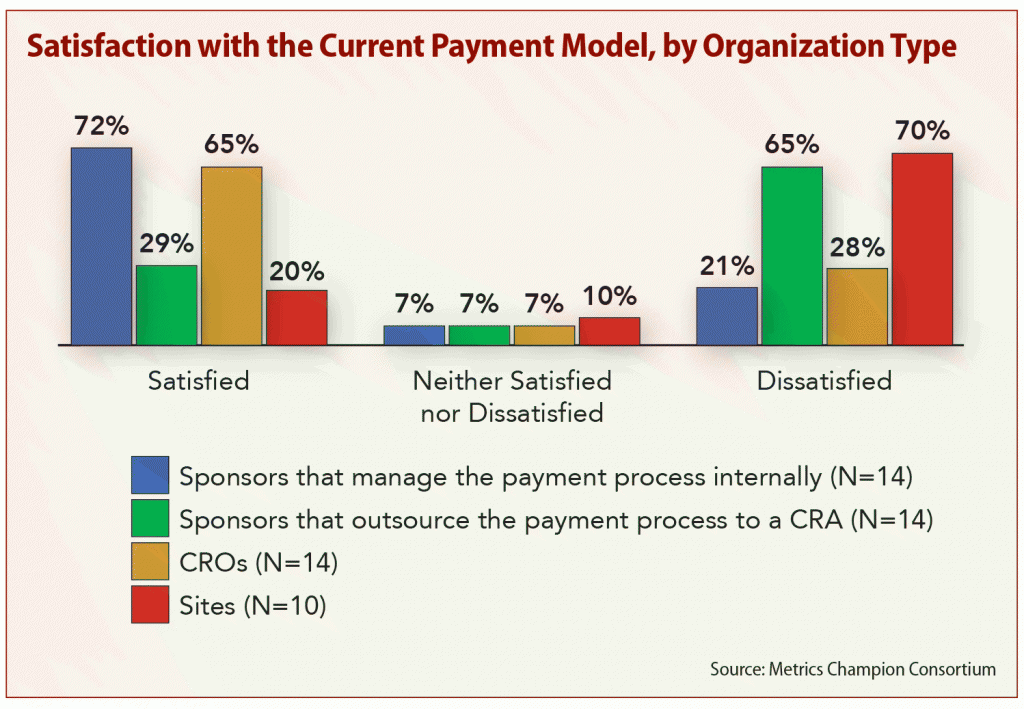Paying sites on time is critical to a trial’s success, sponsors agree, and most believe they’re making the grade. So why are sites so frustrated with how they’re paid? Are their expectations unreasonable or are sponsors operating in the dark?
A recent survey by Metrics Champion Consortium (MCC) indicates the latter is true. More than 70 percent of trial sponsors who manage in-house payment procedures said they’re pleased with their processes; ditto 65 percent of CROs. But sites were overwhelmingly dissatisfied, with 70 percent expressing a negative view.

So what’s the deal?
The survey shows sponsors don’t pay attention to the kind of metrics that can help them solve payment woes. They may know they’re not ponying up promptly but they’re looking for answers in all the wrong places – if at all.
There are many details and data points that can help sponsors figure out how well their payment processes are (or aren’t) working, says Linda Sullivan, MCC’s executive director.
MCC discovered that sites aren’t the only ones unhappy. Sponsors that outsource payment to other entities (like CROs) have less control over the process and often have less insight into how it is working on the contractor’s end.
“Those who are running the process – a sponsor [managing payments] in house or a CRO – think the process is going a lot better than those who are outside of the process,” Sullivan says.
One reason CROs like the process may be the fact that they use more metrics – nearly twice as many as sponsors – to evaluate it.
Understanding how well a process is working requires knowing all aspects of its operations. Tracking a simple metric of how many payments were made “on time” provides no information on why the other payments were not.
Fewer than 50 percent of survey respondents said they use the kind of metrics that provide insight into the root cause(s) of payment problems, such as the number of:
- Invoices submitted by sites with errors;
- Payments that are correct the first time;
- Outstanding invoices with queries;
- Days it takes to reconcile invoice discrepancies; and
- Site complaints about payment problems.
This kind of information allows payers to pinpoint areas that need improvement. Sponsors that manage their own payment processes should begin using such metrics; those that outsource payments should make sure their CROs do, too, and require them to share the information.
Sullivan says to truly grasp and fix payment problems, sponsors must shift their focus from overall performance to “quality metrics.” For example, a large number of invoices outstanding may signal glitches in the invoice reconciliation phase. Tracking the number and nature of payment complaints from sites paints a picture of the depth of the problem.
The survey recommends replacing outmodled clunky manual payment systems with speedy automated ones to eliminate time-consuming and error-prone procedures.
Another tip: Parties involved need to communicate more effectively to align expectations, improve transparency and develop solutions.
